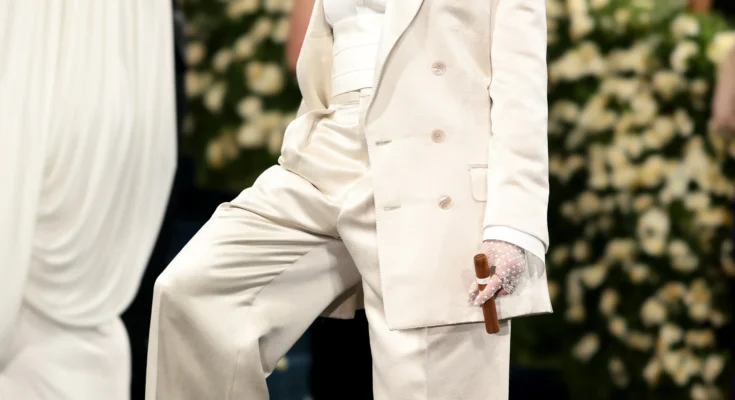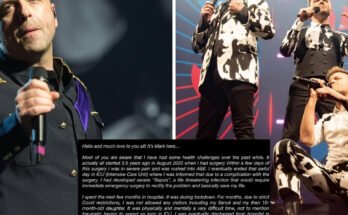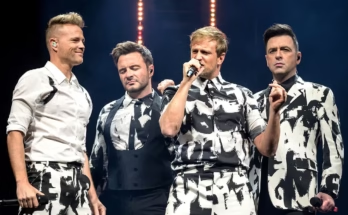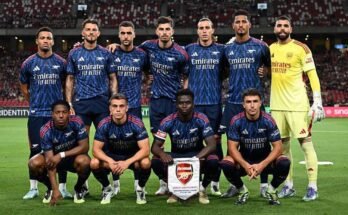Madonna, the undisputed Queen of Pop, has always been a trailblazer in both music and fashion. From the early days of her career, she has shattered norms and redefined the boundaries of what is acceptable in pop culture. The Met Gala, often dubbed the “Oscars of fashion,” is a yearly celebration of style, spectacle, and thematic daring. With its high-fashion red carpet and exclusive guest list, it’s the perfect stage for a provocateur like Madonna to make a statement. Over the years, Madonna’s appearances at the Met Gala have solidified her place not only as a music icon but also as a fearless fashion rebel. Her ensembles consistently challenge convention, push the limits of couture, and tell stories far deeper than what may first meet the eye.
1. The Met Gala: A Brief Introduction
Before diving into Madonna’s iconic appearances, it’s worth understanding the significance of the Met Gala. Organized by Vogue’s Anna Wintour, the annual fundraising gala supports the Metropolitan Museum of Art’s Costume Institute in New York City. Each year, the event revolves around a specific theme aligned with the Costume Institute’s exhibition, encouraging attendees to dress in a way that reflects the artistic and conceptual underpinnings of the chosen motif. For many, it’s a chance to dazzle. For Madonna, it’s an opportunity to disrupt.
2. Madonna’s Met Gala Debut and Early Appearances
Madonna first attended the Met Gala in 1997 when the theme was “Gianni Versace,” honoring the late designer who had a deep connection with the star. Her look was a relatively subdued black gown, paying tribute to her longtime friend. But even then, there were signs of her signature irreverence—subtle leather elements and dark glamour foreshadowed the boundary-pushing moments to come.
Throughout the 2000s, her appearances were sporadic but impactful. She frequently collaborated with bold designers like Jean Paul Gaultier and Givenchy, adding a theatrical edge to her red carpet choices. Madonna’s Met Gala fashion began to evolve into more than just sartorial selections—it became a form of protest, an exploration of identity, and a visual narrative.
3. 2013: “PUNK: Chaos to Couture” — Madonna as Anarchy Incarnate
One of Madonna’s most unforgettable Met Gala moments came in 2013, when the theme was “PUNK: Chaos to Couture.” Many guests struggled to strike the right balance between rebellion and refinement, but Madonna—ever the embodiment of punk’s core philosophy—nailed it. She arrived in a Givenchy ensemble that barely qualified as clothing: a fishnet bodysuit, pink Casadei pumps, a studded plaid blazer, and no pants.
The look was raw, risqué, and electric. Her choice to forgo traditional eveningwear entirely wasn’t just shocking; it was a bold reclamation of punk’s anti-fashion ethos. The ensemble made headlines around the world and perfectly encapsulated her belief in fashion as a form of resistance and self-expression.
4. 2015: “China: Through the Looking Glass” — Cultural Appreciation with Subtlety
Madonna skipped the 2015 Met Gala, but the event’s controversial theme brought discussions of cultural appropriation to the forefront—something she herself had frequently been accused of. It was a moment that highlighted how Madonna has often walked the tightrope between homage and appropriation. While not present that year, her history of adopting global symbols in her fashion and performances—such as her use of Hindu iconography or Geisha aesthetics—was reexamined under a more critical lens. This discourse would influence how she approached future galas.
5. 2016: “Manus x Machina: Fashion in an Age of Technology” — Bare and Bold
Madonna’s 2016 appearance is perhaps one of the most provocative in Met Gala history. Clad in a black lace Givenchy gown that left her breasts and buttocks largely exposed, the outfit was a fearless confrontation of ageism, censorship, and societal expectations around femininity. At 57, Madonna wasn’t just showing skin—she was asserting her right to be seen as sensual, autonomous, and powerful.
Critics called the look “desperate” or “attention-seeking,” but Madonna pushed back with a powerful Instagram post: “We have fought and continue to fight for civil rights and gay rights around the world. When it comes to women, we are still in the Dark Ages.” The ensemble was as much about liberation as it was about fashion, and in true Madonna style, it ignited global conversation.
6. 2017: “Rei Kawakubo/Comme des Garçons: Art of the In-Between” — Function Meets Fantasy
For a theme celebrating avant-garde designer Rei Kawakubo, Madonna chose an unexpected route: army fatigue. Dressed in a camouflage Moschino gown with a cinched waist, leather gloves, and a canteen belt, she reimagined military gear as high fashion. It was another subversive turn—rather than mimicking Kawakubo’s abstract shapes, Madonna embraced the spirit of rebellion and nonconformity that defined the designer’s ethos.
The outfit was more political than most recognized at first glance, evoking imagery of survival, war, and the strength of women under siege. Once again, Madonna leveraged fashion as a message, not just a moment.
7. 2018: “Heavenly Bodies: Fashion and the Catholic Imagination” — Divine Provocation
Madonna’s appearance in 2018 was perhaps the most fitting and ironic, given her long and controversial history with the Catholic Church. For “Heavenly Bodies,” she donned a black Jean Paul Gaultier gown with a cross-adorned crown and fishnet veil—gothic, regal, and unmistakably sacrilegious.
The look was both reverent and rebellious. She performed “Like a Prayer” and “Hallelujah” inside the Met, surrounded by candles and choirs—a fusion of high art, sacred ritual, and pop performance. This was Madonna at her most provocative: merging faith and spectacle in a way that questioned power, devotion, and redemption.
8. The Legacy: Fashion as Resistance, Rebirth, and Ritual
Madonna’s Met Gala fashion history isn’t a series of outfits; it’s a timeline of evolution and confrontation. With each appearance, she challenges not only the fashion industry but also societal constructs around age, religion, sexuality, and gender.
She does not dress for acceptance or admiration. She dresses to provoke, to narrate, and to liberate. Her looks often draw controversy because they defy categorization—they are neither purely political nor entirely artistic. Instead, they exist in the space Madonna herself has always occupied: the in-between, the liminal, the revolutionary.
Conclusion: Madonna’s Met Gala Reign
In a world increasingly curated and cautious, Madonna’s fearlessness remains a breath of radical air. Her rule-breaking Met Gala fashion continues to inspire younger generations of artists and designers to use fashion not just as ornament, but as expression and rebellion. Whether adored or condemned, she ensures one thing: she will never be ignored.
Madonna doesn’t follow the rules—she rewrites them in sequins, lace, and leather. And in doing so, she redefines what it means to wear your truth.
Would you like this article formatted for a blog or magazine layout?



